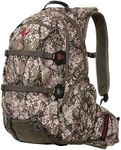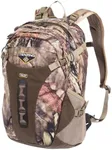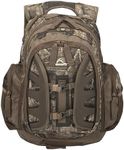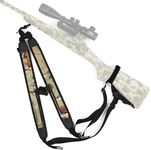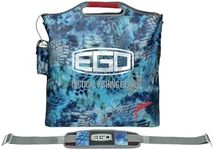Buying Guide for the Best Hunting Backpacks
Choosing the right hunting backpack is crucial for a successful and comfortable hunting experience. A good hunting backpack should be able to carry all your essential gear, be comfortable to wear for long periods, and be durable enough to withstand the elements. When selecting a hunting backpack, consider the following key specifications to ensure you pick the best fit for your needs.CapacityCapacity refers to the amount of gear a backpack can hold, usually measured in liters. This is important because it determines how much equipment you can carry. Smaller backpacks (20-40 liters) are suitable for day hunts where you only need the essentials. Medium-sized backpacks (40-60 liters) are ideal for overnight trips, providing enough space for extra clothing and food. Larger backpacks (60+ liters) are best for multi-day hunts, allowing you to carry camping gear and additional supplies. Choose a capacity based on the duration and type of your hunting trips.
Comfort and FitComfort and fit are crucial for a hunting backpack, as you'll be wearing it for extended periods. This includes features like padded shoulder straps, a hip belt, and an adjustable harness system. These elements help distribute the weight evenly and reduce strain on your back and shoulders. When trying on a backpack, ensure it fits snugly and comfortably, with the weight resting on your hips rather than your shoulders. Consider your body size and shape, and look for backpacks with adjustable components to achieve the best fit.
DurabilityDurability refers to how well the backpack can withstand rough conditions and heavy use. This is important because hunting often involves navigating through dense vegetation, rough terrain, and varying weather conditions. Look for backpacks made from high-quality, water-resistant materials like nylon or polyester. Reinforced stitching and heavy-duty zippers also contribute to a backpack's durability. Choose a backpack that can handle the wear and tear of your hunting environment to ensure it lasts for many seasons.
WeightWeight is the empty weight of the backpack itself. This is important because a lighter backpack will be easier to carry, especially when fully loaded with gear. Lightweight backpacks (under 3 pounds) are great for day hunts or when you need to move quickly. Medium-weight backpacks (3-5 pounds) offer a balance between weight and durability, suitable for most hunting trips. Heavier backpacks (over 5 pounds) are typically more durable and have more features but can be cumbersome. Consider how much weight you are comfortable carrying and choose accordingly.
Organization and AccessibilityOrganization and accessibility refer to the design and layout of the backpack's compartments and pockets. This is important because it helps you keep your gear organized and easily accessible. Look for backpacks with multiple compartments, pockets, and attachment points for items like water bottles, binoculars, and hunting tools. Some backpacks also have specialized compartments for rifles or bows. Choose a backpack with a layout that suits your hunting style and allows you to quickly access your gear when needed.
Camouflage and ColorCamouflage and color refer to the appearance of the backpack and how well it blends into the hunting environment. This is important because it helps you remain concealed from game animals. Camouflage patterns are designed to match specific environments, such as forests, grasslands, or snowy areas. Choose a pattern that matches the terrain where you hunt. If camouflage is not a priority, consider earth-tone colors like brown, green, or gray, which also help you blend in.



